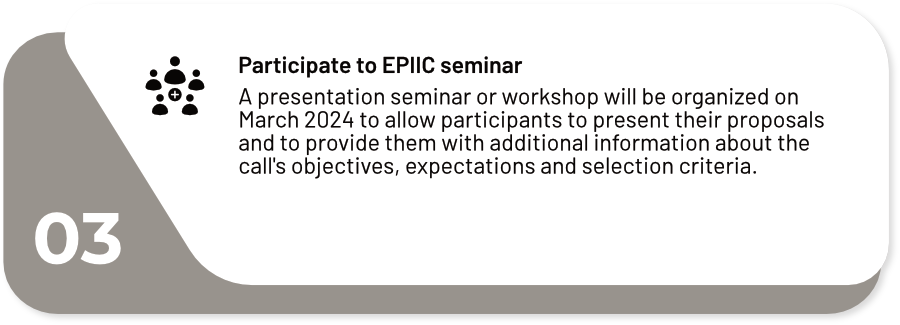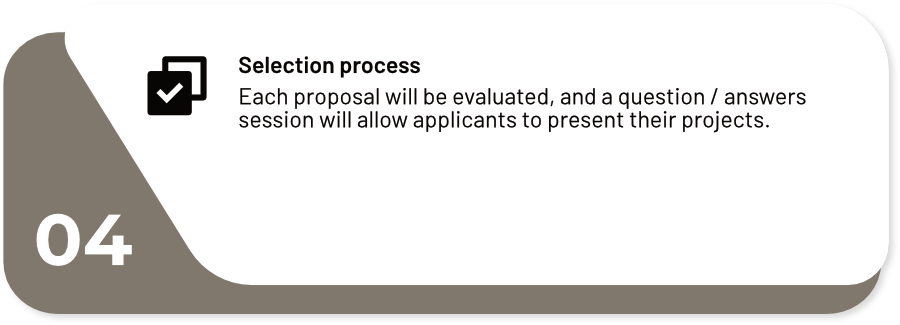EPIIC project aims at tackling the huge challenges of the future air warfare and the collaborative combat by identifying, breeding and assessing highly innovative technologies and disruptive interactive modalities to be integrated to future fighter cockpits. Tomorrow, the presence of the man on board will be justified by his creativity, his ability to decide in uncertainty, under strong time constraints, with or without assistance, but also to recover from an unexpected technical failure. The cockpit is where the pilot interacts with the system. It must be designed to get the job done quickly, efficiently and intuitively. The cockpit must also be capable of understanding the pilot's physiological, cognitive and emotional state, for example to anticipate phenomena impacting mission performance or flight safety (tunnelling, decision-making capacity).
Two thematic have been emphasised that will host subject to be proposed to the community through open-innovation calls: the crew monitoring and the innovative interaction modalities.


OPEN INNOVATION CALL THEMATICS
In current fighter aircrafts, the system monitors each of its components, in order to inform the crew of its status through the cockpit displays and controls. The crew can then take into account degraded system status, and adapt their behaviour to pilot the aircraft. However, the system does not monitor the crew condition nor the crew-system relationship yet. If pioneer systems appear on the market, to detect basic physiological events, such as hypoxia, the monitoring of other conditions needs to mature.
In a fighter cockpit, the Crew Monitoring System (CMS) aims at identifying crew conditions, whether physiological (e.g. hypoxia, G-LOC), cognitive (e.g. mental overload, attentional tunnelling) or emotional conditions (e.g. calmness, confusion, awe, anger...), in order for the system to adapt its interfaces to maintain or increase the mission performance and safety.
This can be achieved by means of multiple physiological sensors. These conditions, together with contextual parameters help getting a clear picture of the global crew functional state, indicating the overall ability of the crew to perform a given mission at a given time. The associated open-innovation calls aims at identifying and maturing algorithmic techniques that estimate the following crew conditions:
These algorithmic techniques should be demonstrated in a laboratory environment provided by the partner. As far as possible, this environment should be relevant in terms of tasks to perform in an aeronautical-related environment.
Join our open-innovation call focused on advancing non-contact gesture-based control interactions. HMI technologies and interaction modalities are integral components of modern combat aircraft, aiming to enhance pilot situational awareness, mission effectiveness, and overall aircraft performance. We're seeking innovative solutions to provide fighter pilots with efficient, intuitive, and real-time control over their aircraft. By integrating gesture control, we aim to enhance the crew’s capabilities to improve operational efficiency by enabling natural and efficient interactions with the systems. Our focus includes evolving technologies like physical controls, displays, HMD, and projections technologies, including VR/AR-based technologies.
We invite proposals for developing and maturing non-contact gesture-based algorithms and hardware to reliably and efficiently interact with different systems available within a fighter cockpit environment, addressing challenges like adaptability to gloved hands, robustness in high-vibration environments, and physical integration constraints.
WHO CAN PARTICIPATE
This open call for innovation is open to a wide range of participants, including:
- Laboratories: Academic and research laboratories with a focus on aerospace-related fields are encouraged to participate. We expect participants from laboratories to bring cutting-edge research and technological expertise to the projects.
- Research Institutes: Organizations specializing in aerospace research and development are welcome to submit proposals. We anticipate a strong commitment to innovative R&D efforts from research institutes.
- Startups: Innovative startups with cutting-edge solutions in aerospace technology are invited to take part in this initiative. We expect startups to bring fresh ideas and a strong spirit of innovation to the table.
- Small and Medium-sized Enterprises (SMEs): Small and medium-sized companies with the capacity to contribute to aerospace innovation are encouraged to apply. We look forward to SMEs actively engaging in research and development activities that drive aerospace innovation.
- Large Companies: Established aerospace industry leaders are also welcome to participate and collaborate on transformative projects. We anticipate large companies' expertise in R&D and resources to play a crucial role in driving innovation.
The applicants for a possible participation shall be established in the European Union or associated countries, as per the European Defense Fund eligibility rules.
HOW TO PARTICIPATE
This process is designed to facilitate a fair and competitive selection process while ensuring the protection of confidential information and intellectual property, with a strong emphasis on fostering innovation and research and development efforts.
To join this open call, interested participants shloud follow these steps :





* To protect intellectual property and sensitive information, eligible participants will be required to sign Non-Disclosure Agreement (NDA) before receiving detailed information about the subjects or topics. NDA help safeguard proprietary information and foster a collaborative but secure environment.
CALENDAR & DEADLINES
06/12/2023
Registration opening
02/02/2024
Registration deadline
(registration extended)
09/02/2024
Publication of selected partners in the EPIIC ecosystem
08/03/2024
EPIIC Seminar
29/03/2024
Deadline for proposals
19/04/2024
Announcement of selected projects
May-June 2024
Project execution










